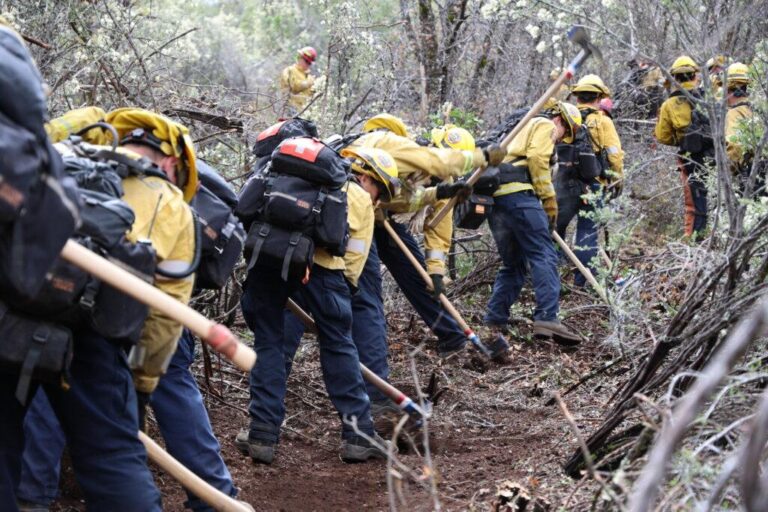Essential Guidance for Wildfire Survivors: Steps to Recovery and Rebuilding
Ensuring Immediate Safety and Finding Temporary Shelter After Wildfires
Following the recent catastrophic wildfires in California, the foremost priority for affected individuals is to safeguard their well-being. It is critical to refrain from returning to damaged properties until local authorities confirm that the area is safe, as hazards like lingering hot spots, weakened structures, and damaged utility lines remain risky. Survivors should promptly notify emergency responders of their status and seek information about available emergency shelters or temporary housing options.
Keep vital documents, medications, and valuables within reach, and maintain communication with trusted family members or friends to update them on your whereabouts and condition. Staying informed through official emergency management channels and weather alerts is essential to adapt to changing circumstances.
Temporary housing is often provided by community centers, organizations such as the Red Cross, and other relief agencies. Registering with these groups either online or via phone can expedite access to food, shelter, and essential supplies. Below is a rapid reference of key contacts frequently available during wildfire emergencies:
| Organization | Contact Number | Services Offered |
|---|---|---|
| American Red Cross | 1-800-REDCROSS | Emergency Shelter, Meals, Emotional Support |
| Federal Emergency Management Agency (FEMA) | 1-800-621-3362 | Disaster Assistance, Temporary Housing Aid |
| Local Fire Department | Non-Emergency Line | Safety Updates, Damage Assessments |
- Register promptly for emergency aid through official channels.
- Keep mobile devices charged and carry portable power banks to maintain communication.
- Stay close to reliable contacts to avoid isolation during this critical time.
Handling Insurance Claims and Exploring Financial Support Options
Contact your insurance company promptly to report any losses caused by the wildfire. Meticulously document all damage by taking photographs, saving receipts, and compiling a comprehensive inventory of destroyed or damaged possessions. When filing your claim, provide clear and complete information along with all required documentation to prevent processing delays. Maintain a detailed record of all interactions with your insurer, including dates, times, and representatives’ names. If disputes arise or claims are denied, consider consulting a public adjuster or an attorney who specializes in insurance matters.
Simultaneously,investigate federal,state,and local financial aid programs designed to assist wildfire survivors. Agencies like FEMA and state disaster recovery offices offer grants and low-interest loans to cover temporary housing, home repairs, and other urgent needs. The table below summarizes key assistance programs:
| Program | Type of Assistance | Contact Information |
|---|---|---|
| FEMA Disaster Assistance | Grants for housing, personal property, and essential needs | FEMA.gov or 1-800-621-3362 |
| Small Business Governance (SBA) Disaster Loans | Low-interest loans for business recovery | SBA.gov or 1-800-659-2955 |
| State Disaster Relief Programs | Supplemental financial aid for residents | Contact your state emergency management office |
Be vigilant about submission deadlines and prepare all necessary paperwork in advance. Numerous nonprofit organizations and local community groups also offer additional support, so reaching out to them can provide valuable resources during recovery.
Utilizing Emergency Services and Community Support Networks
Accessing emergency resources is vital for immediate relief and sustained recovery after wildfire destruction. Local shelters, disaster assistance centers, and government agencies serve as primary contacts for essentials such as food, clothing, and medical aid. The American Red Cross frequently collaborates with community partners to provide safe accommodations and critical supplies. Survivors should register with FEMA’s disaster assistance portal to check eligibility for federal grants and loans. Many municipalities have established dedicated hotlines to assist wildfire victims with housing, counseling, and financial support.
Community organizations are instrumental in rebuilding lives and fostering resilience. Faith-based groups, volunteer organizations, and local nonprofits offer practical assistance and emotional support throughout the recovery journey. Below is a list of essential community support contacts:
- Disaster Recovery Centers: Provide in-person guidance and resources
- Legal Aid Services: Assist with insurance disputes and tenant rights
- Mental Health Crisis Lines: Offer counseling and referral services
- Food Banks and Pantries: Distribute groceries and prepared meals
| Organization | Services Provided | Contact |
|---|---|---|
| California Wildfire Relief Fund | Emergency grants and rebuilding assistance | 1-800-123-4567 |
| Los Angeles County Mental Health Services | 24/7 crisis counseling and support | 1-800-765-4321 |
| Community Food Cooperative | Free meals and grocery distribution | help@foodcoop.org |
Strategizing for Long-Term Recovery and Reconstruction
Recovering from wildfire damage is a multifaceted endeavor that demands coordination with insurance companies, local authorities, and community organizations. Begin by thoroughly documenting all damage with photos and videos, then promptly submit this evidence to your insurer. Engage with disaster recovery centers to learn about available financial aid, grants, and counseling services. These entities can assist you in navigating eligibility requirements and application processes to ensure timely support.
When rebuilding, emphasize the use of fire-resistant construction materials and adhere to updated building codes to improve safety and durability. Consult with licensed contractors experienced in post-wildfire reconstruction to receive expert guidance on resilient design choices. Community involvement is equally important—participate in neighborhood meetings or rebuilding coalitions to share resources and amplify collective recovery efforts. The table below outlines key steps for long-term recovery:
| Step | Action | Resources |
|---|---|---|
| Documentation | Capture detailed images and videos of damage | Insurance companies, FEMA |
| Financial Assistance | Apply for grants, loans, and aid programs | Local disaster recovery centers |
| Reconstruction | Incorporate fire-resistant materials and comply with codes | Licensed contractors, municipal building departments |
| Community Engagement | Join local rebuilding initiatives and support networks | Neighborhood councils, community groups |
Final Thoughts
The aftermath of destructive wildfires presents survivors with the formidable task of reconstructing their homes and lives amid uncertainty. Even though the recovery journey can be daunting, being informed about available resources and taking prompt, deliberate actions can significantly ease the process. Stay connected with local officials, leverage support from relief organizations, and meticulously document all damages to facilitate insurance claims and aid applications. As communities unite in recovery efforts, timely access to accurate information and assistance remains vital for rebuilding stronger and safer futures. For continuous updates and detailed advice,rely on reputable news outlets and official government sources.




